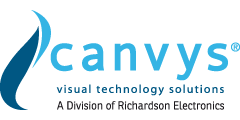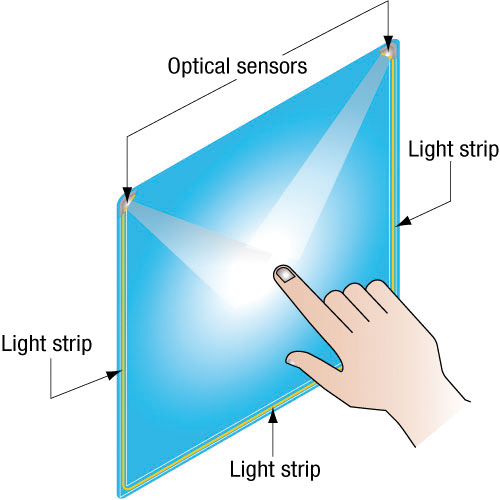Optical (Camera)
Sensor Materials
Glass substrate, line scanning optical sensors, lighting strips
Principle of Operation
- Miniature cameras are positioned in the top two corners of the substrate.
- Illuminated border or reflective borders on the opposing three sides project a uniform field of infrared light slightly above the glass surface.
- Touch occurs when a finger or object block the light from the cameras.
- The controller processes the optical information and calculates the X, Y coordinates.
Pros and Cons
| Pros | Cons |
| Functions with scratches and surface wear | Moving liquids or solid contaminants may cause false touches or non-function until completely removed |
| Touch activated by bare finger, gloved finger, or stylus | Requires a bezel design to house the edge positioned camera system |
| Scalable | System thickness is typically 3.5 mm in addition to the thickness of the glass |
| Transmission is typically > 90 % | Touch occurs slightly above the actual surface |
| Limited to two resolvable points with two cameras; three or more resolvable points with four cameras |
Content and images of 3M were reproduced with permission © 3M 2010. All rights reserved.

